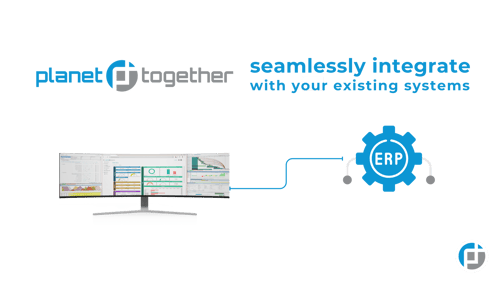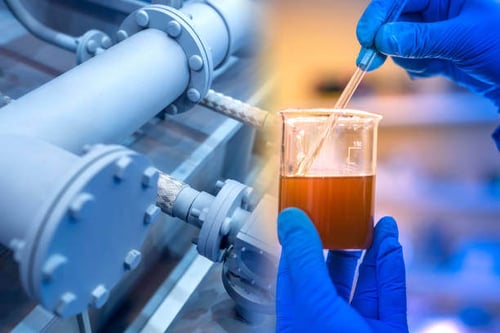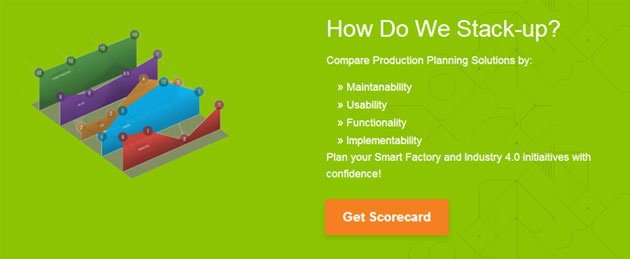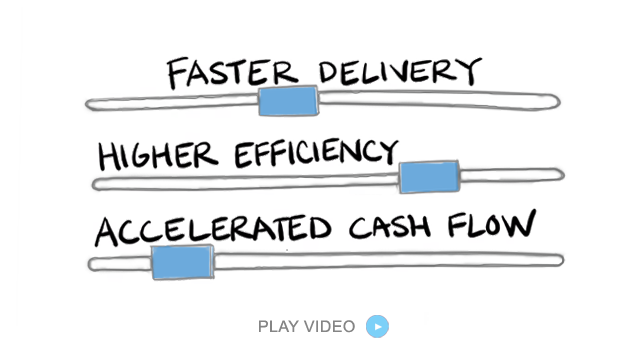Quality Control and Hazard Analysis in Chemical Manufacturing: How Manufacturing IT Can Drive Excellence Through Integration
In the chemical manufacturing industry, where precision is non-negotiable and safety is essential, the intersection of Quality Control (QC) and Hazard Analysis is a critical focus. For Manufacturing IT Managers, the responsibility extends beyond just keeping systems online—it’s about enabling seamless data flow, ensuring real-time visibility, and facilitating compliance, traceability, and performance optimization.
This is especially important when managing integrations between Advanced Planning and Scheduling (APS) platforms like PlanetTogether and enterprise systems such as SAP, Oracle, Microsoft Dynamics, Kinaxis, or Aveva.
In this blog, we’ll explore how a well-integrated planning and execution ecosystem empowers Manufacturing IT teams to better support Quality Control and Hazard Analysis in chemical manufacturing, reduce compliance risks, and elevate operational agility.

The Stakes: Why QC and Hazard Analysis Are Mission-Critical
Chemical manufacturing involves complex processes with high variability and inherent risk. From handling volatile substances to ensuring batch consistency, every stage of production must align with regulatory standards like OSHA’s Process Safety Management (PSM) and ISO 9001/14001 certifications.
Quality Control ensures that materials and finished products meet specific criteria, preventing costly recalls or dangerous product failures. Meanwhile, Hazard Analysis identifies potential operational risks and mitigates them before they escalate.
For IT Managers, supporting this dual mandate means:
Managing robust data architecture across systems
Enabling real-time tracking and traceability
Facilitating predictive analytics to prevent failures
Automating compliance documentation and workflows

Where Integration Comes In: Bridging APS and Enterprise Systems
At the heart of a quality-driven chemical manufacturing operation lies data synergy. When APS tools like PlanetTogether are integrated with ERP or MES systems such as SAP, Oracle, Microsoft Dynamics 365, Kinaxis, or Aveva, the result is a unified ecosystem capable of driving real-time decisions, ensuring consistent product quality, and detecting risk proactively.
Let’s examine a few practical ways integration supports QC and hazard mitigation:
Closed-Loop Quality Feedback via APS and ERP Integration (e.g., SAP, Oracle)
When PlanetTogether is integrated with an ERP like SAP S/4HANA or Oracle Fusion Cloud, it can pull in real-time quality data such as lot genealogy, non-conformance reports, and Certificate of Analysis (COA) metrics.
This information is not just passively stored—it feeds back into the scheduling engine. If a batch fails quality tests, PlanetTogether can:
Flag the issue
Reschedule downstream processes automatically
Adjust capacity planning and materials use
Notify stakeholders for corrective action
For instance, if a batch of raw chemicals fails a pH range specification, PlanetTogether can push that information to SAP and reallocate compliant materials to priority orders—avoiding downtime and quality bottlenecks.
Real-Time Hazard Detection Through IoT and MES Data Integration (e.g., Microsoft or Aveva)
Platforms like Microsoft Azure IoT Hub or Aveva System Platform capture real-time sensor data from reactors, pressure vessels, and other critical systems. When integrated with PlanetTogether, these data streams help detect deviations in temperature, pressure, or chemical concentration.
IT Managers can configure alerts and triggers within the MES/IoT ecosystem that automatically impact scheduling:
If hazardous conditions are detected, production steps can be paused or rerouted
Equipment flagged for inspection can be removed from active scheduling
Downtime is automatically reflected in planning dashboards, reducing manual intervention
This closes the loop between safety monitoring and production scheduling, creating a responsive, hazard-aware planning environment.
Better Compliance and Traceability with Kinaxis Integration
Kinaxis excels at enabling supply chain orchestration and traceability. When paired with PlanetTogether, the duo enables full visibility from supplier inputs to production outputs—crucial in maintaining quality and ensuring every lot is compliant.
For example, if a raw material from a supplier has a documented deviation, Kinaxis can flag this in the supply chain. PlanetTogether receives this data and can:
Prevent that material from being scheduled into production
Adjust the master schedule
Suggest alternate suppliers or inventories
Generate automated documentation for audits
This is especially useful when navigating GMP (Good Manufacturing Practices) and regulatory inspections. IT teams can ensure audit-readiness with zero last-minute scrambling.
Predictive Quality Management Using Historical Data Integration
PlanetTogether’s scheduling engine becomes even more powerful when historical QC and production data are analyzed. Integration with Microsoft Power BI, Oracle Analytics, or SAP BW allows Manufacturing IT to visualize long-term trends.
With proper machine learning models in place, the system can forecast:
Which formulations have higher risk of quality failures
Which equipment is most likely to cause deviation
How operator shifts influence consistency
This allows PlanetTogether to schedule with quality-first heuristics, reducing rework, scrap, and safety incidents.
Automating CAPA Workflows and Risk Analysis
When non-conformances are detected, a Corrective and Preventive Action (CAPA) process is triggered. Integrated systems can streamline this by:
Generating CAPA reports in ERP (SAP, Oracle)
Creating linked tasks in MES systems (Aveva, Microsoft Dynamics)
Rescheduling rework or inspections in PlanetTogether
Hazard Analysis and Risk Assessment (HARA) frameworks can also be digitized and linked to planning logic. If a risk score for a process exceeds a certain threshold, the planning system can avoid overloading that asset or schedule staggered batches to reduce probability of failure.

The Role of IT: Building a Secure, Agile, and Scalable Infrastructure
For Manufacturing IT Managers, making all this work requires a robust architectural foundation. Key responsibilities include:
API and middleware management – Ensuring smooth data flow between PlanetTogether and ERP/MES platforms via REST, SOAP, or OData APIs.
Data governance – Establishing standards for data accuracy, validation, and lineage to support quality analytics.
Cybersecurity – Securing IIoT devices and data pipelines, especially those feeding into hazard analysis systems.
User access control – Managing permissions across scheduling, production, and QC functions to prevent unauthorized modifications.
Scalability is equally critical. As your plant expands or diversifies its chemical portfolio, your integrations should support multi-site planning, cross-plant visibility, and configurable quality thresholds across production lines.
How One Chemical Manufacturer Transformed QC with Integration
A mid-sized specialty chemicals manufacturer integrated PlanetTogether with SAP S/4HANA and Microsoft Azure IoT. Their goals were to reduce batch failures and improve operator safety.
With real-time sensor data feeding into PlanetTogether and lot-level QC results syncing from SAP, the company:
Reduced batch rework by 18% in 9 months
Improved compliance audit scores across two global sites
Slashed scheduling adjustment times from 2 hours to under 10 minutes
Used predictive data modeling to identify and mitigate a recurring hazard in a blending process
The IT team led the integration, building a modular middleware layer that allowed for rapid adaptation as new data streams came online.
In a world of tightening regulations and increasing customer expectations, chemical manufacturers must deliver quality and safety—without sacrificing agility. For Manufacturing IT leaders, the answer lies in creating a smart, connected production ecosystem where APS, ERP, MES, and IoT platforms work as one.
By integrating PlanetTogether with enterprise systems like SAP, Oracle, Microsoft, Kinaxis, or Aveva, IT departments can empower production and quality teams to make faster, smarter decisions. The result? Safer operations, higher-quality output, and a resilient manufacturing infrastructure that can adapt to tomorrow’s challenges.
Are you ready to take your manufacturing operations to the next level? Contact us today to learn more about how PlanetTogether can help you achieve your goals and drive success in your industry.
Topics: PlanetTogether Software, Integrating PlanetTogether, Chemical Manufacturing, Predictive Quality Management, Closed-Loop Quality Feedback, Real-Time Hazard Detection Through IoT, Better Compliance and Traceability, Automating CAPA Workflows and Risk Analysis





















LEAVE A COMMENT